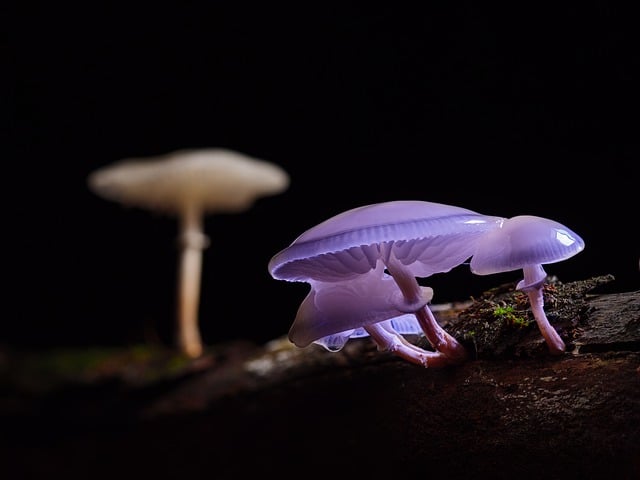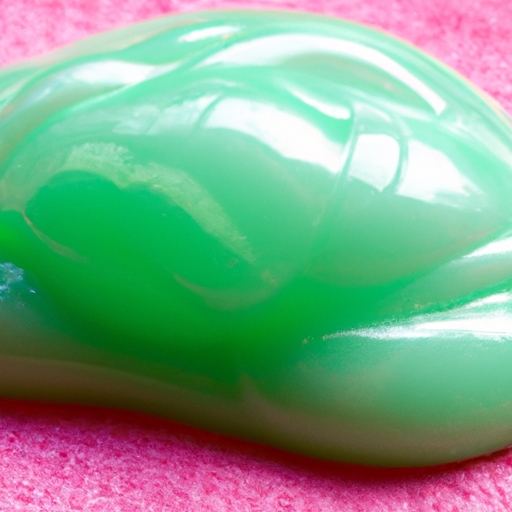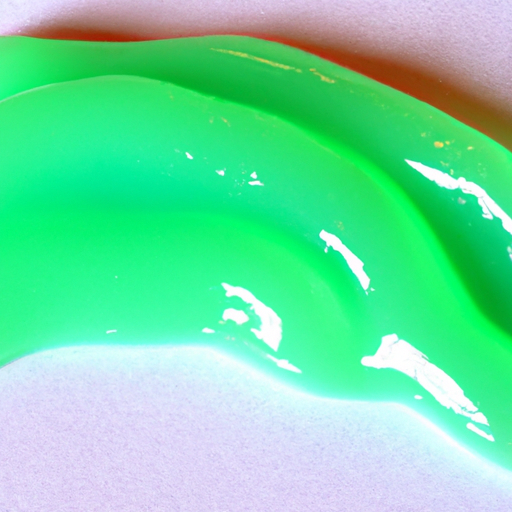
Have you ever wondered what all the fuss is about when it comes to slime? It seems like everywhere you turn these days, someone is talking about or playing with slime. Well, wonder no more, because in this article, you’re going to learn all about slime and why it has become such a popular trend. From its mesmerizing textures to its endless creative possibilities, slime is more than just a gooey substance – it’s a sensation that is here to stay.
So, what exactly is slime? Slime is a stretchy, squishy, and often colorful substance that is made by combining a few simple ingredients. Typically, slime is created by mixing together glue, a liquid activator, and various additives such as food coloring or glitter. The result is a fascinating material that can be molded, stretched, and even squeezed between your fingers. And the best part? Slime comes in countless varieties, from fluffy to buttery to crunchy, so there’s bound to be a type that suits your preferences. If you’re ready to dive deeper into the world of slime and discover how to make your own unique batches, keep reading.

Table of Contents
What is Slime?
Slime has become incredibly popular in recent years, captivating both children and adults alike. But what exactly is slime? In this article, we’ll explore the definition of slime, its ingredients, various types, and its properties. We’ll also delve into how to make slime, common problems encountered while making or handling slime, safety precautions, and storage tips. Additionally, we’ll discuss the uses and activities associated with slime, its growing trend and popularity, alternative slime options, and conclude with some final thoughts on this fascinating substance.
Definition of Slime
Slime can be defined as a viscous, non-Newtonian fluid that is a cross between a liquid and a solid. It is often described as a gooey and stretchy substance that is fun to play with and manipulate. Slime is typically made by combining various ingredients, which we will discuss in the next section.
Ingredients of Slime
The ingredients required to make slime can vary depending on the type of slime you want to create, but there are a few common ingredients that most slime recipes include. The basic slime recipe usually consists of glue, a liquid activator (such as borax solution or contact lens solution), and water. Additional ingredients, such as food coloring, glitter, or scents, can be added for customization and aesthetic appeal.
Types of Slime
Slime comes in a wide range of variations, each offering its own unique properties and sensory experiences. Some popular types of slime include:
-
Clear Slime: This type of slime is transparent and often resembles jelly. It has a smooth and glossy texture, making it visually appealing.
-
Fluffy Slime: Fluffy slime is characterized by its light and airy texture, giving it a cloud-like feel when touched. It is created by adding shaving cream or a similar foaming agent to the basic slime recipe.
-
Butter Slime: Butter slime is a soft and pliable type of slime that is smooth to the touch. It gets its name from its resemblance to butter in terms of texture.
-
Glitter Slime: As the name suggests, glitter slime is infused with glitter particles, adding sparkle and visual interest to the slime.
-
Magnetic Slime: This type of slime contains magnetic properties, allowing it to interact with magnets. It is often used in science experiments and demonstrations.
These are just a few examples of the vast array of slime types that you can create. The possibilities are endless when it comes to customization and creativity with slime recipes.
Properties of Slime
Now that we’ve covered what slime is and its different types, let’s explore some of the properties that make slime so fascinating.
Viscosity of Slime
One of the key properties of slime is its viscosity. Viscosity refers to the resistance of a fluid to flow. Slime is known for its unique viscosity, which allows it to flow slowly like a liquid when poured, but also stretch and mold like a solid when manipulated. The viscosity of slime can be adjusted by altering the recipe or adding additional ingredients.
Stretchiness of Slime
Slime is renowned for its stretchy nature, which is why it’s often referred to as “stretchy slime” or “stretchable slime.” When you pull slime apart, it stretches and elongates before returning to its original shape. This stretchiness adds to the sensory appeal and tactile experience of playing with slime.
Color and Texture of Slime
The color and texture of slime can vary greatly depending on the ingredients used. Slime can be made in a multitude of vibrant colors, allowing for endless possibilities in terms of visual customization. Texture-wise, slime can range from smooth and glossy to fluffy and light. The combination of color and texture makes slime visually appealing and engaging to the senses.
How to Make Slime
Now that you have an understanding of what slime is and its properties, you might be wondering how to make your own slime. The process of making slime is relatively simple and requires just a few materials. Let’s dive into the step-by-step instructions.
Gathering the Materials
To make slime, you will need the following materials:
- Clear or white glue
- Liquid activator (such as borax solution or contact lens solution)
- Water
- Food coloring (optional)
- Glitter (optional)
- Mixing bowl
- Measuring cups and spoons
- Airtight container for storage
Choosing the Slime Recipe
Before starting, it’s essential to choose a slime recipe that suits your preferences and the materials you have on hand. There are numerous recipes available online, each with its own set of instructions and ingredient ratios. Consider factors such as the type of slime you want to create, the ingredients you have available, and any specific sensory properties you desire, like scent or texture.
Step-by-step Instructions
-
Pour around 1 cup of clear or white glue into a mixing bowl.
-
Add a few drops of food coloring to the glue if desired, and stir until the color is evenly distributed.
-
Gradually add your liquid activator, starting with small amounts and stirring well after each addition. Continue adding the activator until the slime starts to form and pull away from the sides of the bowl.
-
If you want to add glitter or any other optional ingredient, now is the time to do so. Sprinkle or mix in the desired amount, ensuring it is evenly distributed throughout the slime.
-
Knead the slime with your hands to further mix and activate it. This will help achieve the desired consistency and remove any remaining stickiness.
-
Once you’ve achieved the desired texture, your slime is ready to play with! Store it in an airtight container between uses to keep it fresh.
Remember, the proportions and specific instructions may vary depending on the recipe you choose. It’s essential to follow the recipe you select to ensure the best results.
Common Slime Problems
While making and playing with slime, you may encounter a few common problems. Let’s discuss some of these issues and how to address them.
Stickiness Issues
One of the most common problems with slime is stickiness. If your slime is too sticky and doesn’t have the desired stretchy consistency, it’s likely due to an excess of liquid activator or not enough kneading. To fix this, try adding small amounts of your chosen activator and knead the slime until it becomes less sticky. If the problem persists, you may need to adjust the ingredient ratios or follow a different recipe.
Hardening or Drying Out
Over time, slime may harden or dry out, losing its desired stretchiness and becoming difficult to play with. To revive dried-out slime, try adding a small amount of water or activator and knead it until it becomes softer and more pliable again. If the slime remains hard or dried out, it may be time to make a fresh batch using a new recipe or adjusting the ingredient ratios.
Stains and Mess
Slime can sometimes leave stains on surfaces or fabrics. To minimize staining, it’s best to play with slime on a smooth and easily washable surface, such as a tray or tabletop covered with plastic wrap or a plastic tablecloth. If a stain does occur, promptly clean it with warm water and mild soap. Avoid using harsh chemicals or products that could damage the surface or fabric.

Slime Safety
Safety is always a priority, especially when it comes to children or those with sensitivities. Here are some important safety precautions to keep in mind when handling slime.
Safety Precautions
- Adult supervision should be present while making and playing with slime, especially for young children.
- Avoid ingesting slime or any of its ingredients, as they are not intended for consumption.
- Wash hands thoroughly before and after handling slime to reduce the risk of contamination or irritation.
- Keep slime away from the eyes and mouth to avoid any potential irritation or discomfort.
Proper Slime Storage
To ensure your slime remains in good condition between uses, proper storage is essential. Here are a few tips for storing slime:
- Place the slime in an airtight container to prevent exposure to air, which can cause it to dry out or harden.
- Store the slime in a cool and dry place, away from direct sunlight or extreme temperatures.
- Avoid storing the slime in excessively humid environments, as this can also impact its texture and consistency.
Avoiding Allergic Reactions
It’s important to be aware that some individuals may have sensitivities or allergies to certain ingredients commonly found in slime, such as glue or certain food coloring additives. If you or anyone who will be handling slime has known allergies, be sure to check the ingredient list and avoid any potential allergens. It’s always safest to conduct a patch test on a small area of skin before using a new slime recipe or product.
Storing and Preserving Slime
Proper storage and maintenance can help extend the longevity of your slime. Here are some tips for storing and preserving slime:
Slime Storage Containers
Investing in good-quality airtight containers is essential for preserving the freshness and texture of your slime. Look for containers that are leak-proof and durable to prevent any mess or damage.
Tips for Extended Longevity
- Avoid leaving slime exposed to air for extended periods. Always seal the container tightly after use.
- If you notice your slime becoming sticky or losing its desirable texture, try kneading it with a small amount of activator until it regains its original consistency.
- Store slime away from direct sunlight, as prolonged exposure can cause the colors to fade or change over time.
- If you have different types of slime, consider storing them separately to prevent colors or scents from mixing.
Reviving Dried Out Slime
If your slime has dried out over time, don’t fret! There are a few methods you can try to revive dried-out slime:
- Add a small amount of water or your chosen activator to the hardened slime and knead it until it becomes pliable again.
- Place the dried-out slime in a microwave-safe container and heat it in short intervals, checking and kneading it between each interval until it softens.
It’s important to note that not all dried-out slime can be effectively revived, especially if it has been left exposed for an extended period. In such cases, it may be best to discard the old slime and make a fresh batch.

Slime Uses and Activities
Slime is not just a fun and mesmerizing substance; it also offers various uses and activities for both kids and adults. Let’s take a look at some of the ways slime can be enjoyed.
Sensory Play for Kids
Slime is an excellent sensory play material for children. Its unique texture and properties provide a tactile experience that can stimulate and engage their senses. Playing with slime can help develop fine motor skills, promote creativity and imagination, and provide a calming and therapeutic effect.
Stress Relief for Adults
Slime is not limited to children; it can also offer stress relief and relaxation for adults. The act of stretching, squishing, and manipulating slime can help relieve stress and anxiety, providing a soothing and calming effect. Many adults find the process of playing with slime to be a meditative and therapeutic experience.
Slime Science Experiments
Slime can also be used for educational purposes and science experiments. Children can learn about various scientific concepts, such as viscosity, polymers, and chemical reactions, through hands-on slime experiments. These experiments can be conducted at home or in schools, making learning both fun and interactive.
Slime Trend and Popularity
Slime has experienced a tremendous surge in popularity in recent years, becoming an internet sensation and captivating audiences worldwide. Let’s explore some factors that have contributed to the widespread interest in slime.
Internet Sensation
Slime has gained massive popularity through viral videos and social media platforms. Numerous slime enthusiasts and content creators share mesmerizing and satisfying videos of slime manipulation, attracting millions of views and followers. The visual appeal and sensory experience offered by slime make it a perfect fit for online content consumption.
Social Media Influence
Platforms such as Instagram, YouTube, and TikTok have played a significant role in the rise of slime’s popularity. Many social media influencers and celebrities showcase their homemade slime creations, tutorials, and slime-related challenges, fostering a sense of community and inspiring others to get involved in the slime craze.
Slime Conventions and Communities
The growing popularity of slime has given rise to slime conventions and communities where enthusiasts come together to share their love for all things slime. These events feature slime vendors, workshops, demonstrations, and even slime competitions, creating a sense of belonging and fostering creativity within the slime community.

Alternatives to Traditional Slime
While the traditional slime recipe is undoubtedly a favorite, there are several alternative options available for those looking to explore different types of slime or cater to specific preferences. Let’s take a look at a few alternatives to traditional slime.
Edible Slime Recipes
Edible slime recipes have gained popularity, especially among young children or those who may have concerns about using non-edible ingredients. Edible slime can be made using ingredients such as fruit purees, cornstarch, or gelatin. These recipes provide a safe and fun alternative for those who want to interact with slime in a more sensory manner.
Natural and Eco-friendly Options
For individuals concerned about the environmental impact of traditional slime ingredients, there are eco-friendly slime recipes available. These recipes use natural ingredients like tapioca starch, plant-based glue, or natural food coloring to create a more sustainable slime experience.
DIY Non-sticky Slime
Sticky slime can sometimes be a common issue, but there are slime recipes available that offer a non-sticky alternative. By experimenting with different ingredient ratios or using alternative activators, you can create slime with a less sticky texture. Non-sticky slime allows for easier handling and cleanup, making it a preferable choice for many slime enthusiasts.
Conclusion
Slime, with its unique properties and sensory appeal, has become a fascinating phenomenon enjoyed by people of all ages. Whether you’re a child exploring the wonders of sensory play or an adult seeking stress relief, slime offers a captivating and engaging experience. With countless variations, colors, and textures to experiment with, the possibilities of slime creations are endless. From its online popularity to its use in science experiments and the sense of community it has fostered, slime continues to captivate and inspire. So go ahead and indulge in the magical world of slime—stretch, squish, and let your creativity flow!




